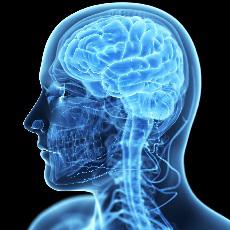
What is a stroke?
A stroke happens when there is a loss of blood flow to part of the brain. Your brain cells cannot get the oxygen and nutrients they need from blood, and they start to die within a few minutes. This can cause lasting brain damage, long-term disability, or even death.
If you think that you or someone else is having a stroke, call 911 right away. Immediate treatment may save someone's life and increase the chances for successful rehabilitation and recovery.
- Stroke (National Library of Medicine)What is a stroke? A stroke happens when there is a loss of blood flow to part of the brain. Your brain cells cannot get the oxygen ... that you or someone else is having a stroke, call 911 right away. Immediate treatment may save ...
- Ischemic Stroke (National Library of Medicine)A stroke is a medical emergency. There are two types - ischemic and hemorrhagic. Ischemic stroke is the more common type. It is usually ... are at risk for having a more serious stroke. Symptoms of stroke are: Sudden numbness or weakness ...
- Stroke Rehabilitation (National Library of Medicine)A stroke can cause lasting brain damage. People who survive a stroke need to relearn skills they lost because of ... them relearn those skills. The effects of a stroke depend on which area of the brain was ...
- Hemorrhagic Stroke (National Library of Medicine)A stroke is a medical emergency. There are two types - ischemic and hemorrhagic. Hemorrhagic stroke is the less common type. It happens when ... an artery wall that breaks open. Symptoms of stroke are: Sudden numbness or weakness of the face, ...
- Transient Ischemic Attack (National Library of Medicine)A transient ischemic attack (TIA) is a stroke that lasts only a few minutes. It happens when the blood supply to part of the brain is briefly blocked. Symptoms of a ...
- Heat Illness (National Library of Medicine)... raise your risk. Heat-related illnesses include: Heat stroke - a life-threatening illness in which body temperature ... is not treated, it can turn into heat stroke. Heat cramps - muscle pains or spasms that happen ...
- Mitochondrial encephalomyopathy, lactic acidosis, and stroke-like episodes (MELAS) is a condition that affects many of the body's systems, particularly the brain and ...
- You were in the hospital after having a stroke . Stroke happens when blood flow to part of the ... started treatment to help you recover from the stroke and prevent a future stroke. You may have ...
- A stroke occurs when blood flow to a part of the brain stops. A stroke is sometimes called a "brain attack." If blood ... Brain cells can die, causing lasting damage. A stroke can also occur if a blood vessel inside ...
- A stroke happens when blood flow to any part of the brain stops. Each person has a different recovery ... in the first weeks or months after a stroke. Some people will keep improving months or years ...



